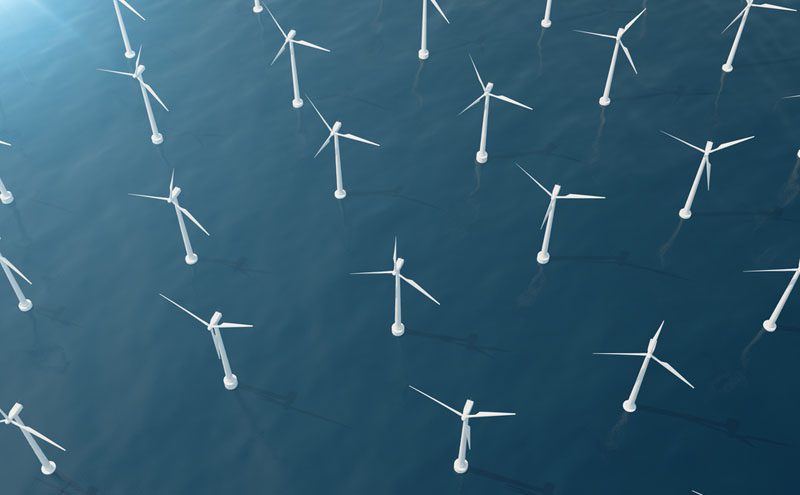
Wind power developer Vattenfall has awarded €3million of research funding to projects that promise to offer insight into the socio-economic impact of offshore wind farms. Projects among the winners also promise to shed light on the lives of bottlenose dolphins, salmon, sea trout and sea birds.
The scientific research and monitoring fund aims to study the environmental effects of offshore wind in a real-time environment.
Believed to be the largest-scale offshore wind research programme of its kind, and one which will put Scotland at the forefront of research and development in this area, the diverse range of projects selected will be based at Vattenfall’s European Offshore Wind Deployment Centre (EOWDC) in Aberdeen Bay.
The successful recipients of a share in the dedicated €3m EOWDC fund, up to half of which is being provided by the European Union, include:
• The River Dee Trust, Aberdeenshire, and Marine Scotland Science – Assessing the interactions between salmon and sea trout with offshore wind technology. The project aims to help provide unknown information on the extent to which offshore wind farms influence salmon and sea trout.
• SMRU Consulting and the University of St Andrews, both St Andrews – Improving understanding of bottlenose dolphin movements along the east coast of Scotland. The project involves undertaking a comprehensive study of bottlenose dolphin movements throughout the development and part of the operational phase of the EOWDC to offer greater insight into bottlenose dolphins.
• MacArthur Green, Glasgow – Measuring connectivity between auk special protection areas populations and offshore wind farms, and tracking non-breeding season movements of adult auks. As such, the project aims to demonstrate that this could reduce future uncertainty in impact assessments and improve understanding of how auks engage and co-exist with Offshore Wind Farms. This project will fund a PhD student to work with the research team.
• Oxford Brookes University, Oxford – The socio-economic impact of offshore wind on the human environment. The project will analyse the socio-economic effects of the EOWDC from the construction stage through to becoming fully operational to help better understand how offshore wind developments can be maximised to benefit the region and local communities.
Adam Ezzamel, EOWDC project director at Vattenfall, said: “The announcement of these successful projects including three in Scotland is an exciting one with each having the potential to unlock fascinating new insights into the offshore wind environment and determine influencing environmental factors.
“The 92.4MW EOWDC test and demonstration facility offers an unmissable opportunity to conduct this pioneering research and monitoring programme. We are pleased to be facilitating such innovative research in the North-east which will bring considerable benefits to the region as well as the industry and policy-making.”
Almost 100 applications from across the UK and overseas were submitted for the research programme with a shortlist of 16 selected by a specialist scientific panel comprised of environmental agencies, scientists, AREG and representatives of Vattenfall.
Professor Stuart Gibb, chair of the Scientific Panel Professor and Director of the Environmental Research Institute at the University of the Highlands and Islands, said: “The panel were delighted with the response to programme call, and received many proposals supported by strong research teams involving some of the most prominent experts in their respective fields.
“We believe those projects that have been successful will effectively inform development of the EOWDC facility and deliver real, tangible data that increases our understanding of the relationship between offshore renewable energy developments and the environment. Such knowledge will be highly effective in informing future planning and consenting activities.”
The panel anticipates making a further funding announcement in the near future.
Scottish Government Minister for Business, Innovation and Energy, Paul Wheelhouse MSP said: “This €3 million investment and commitment from Vattenfall and the European Union is most welcome. The research will strengthen our scientific understanding of the potential environmental impacts of offshore wind generation and their socio-economic impacts too. It is very positive news that three of the four successful project bids were from Scottish organisations, which underlines Scotland’s expertise in providing robust science which can protect and enhance the biodiversity of our seas and also aid our understanding of offshore wind projects on communities and our economy.”
Jean Morrison, chair of Aberdeen Renewable Energy Group (AREG) which is a supportive partner of the project, said: “Since its inception the EOWDC has set out to be a crucial enabler for research into offshore wind, so these project awards represent another major milestone. The studies will ensure scientific learnings on the impacts and benefits of offshore wind can be shared and understood which will help future developments in the region and across the country. AREG is proud to support this significant research programme.”
Lindsay Roberts, Senior Policy Manager at Scottish Renewables, said: “Scotland is known as an innovation nation and cutting edge projects like the Aberdeen Bay wind farm mean that title is as true today as it’s ever been.
“These research projects will enhance the value provided by the wind farm and give industry and the scientific community more of the knowledge they need to ensure future offshore wind developments provide the maximum possible social, economic and environmental benefits – wherever they are in the world.”
The panel includes representatives of Vattenfall, Aberdeen Renewable Energy Group, Marine Scotland Science, Scottish Natural Heritage, the Scottish Environment Protection Agency, RSPB Scotland, the Joint Nature Conservation Committee, Whale and Dolphin Conservation, and The Crown Estate.
As Scotland’s largest offshore wind test and demonstration facility, the 11-turbine EOWDC is a cutting-edge facility being developed by Swedish utility company Vattenfall. Construction of the scheme, which features a number of innovations and industry firsts, started in October 2016 with first power expected in summer 2018.
More information about the EOWDC and scientific research and monitoring programme is available at https://corporate.vattenfall.co.uk/eowdc






